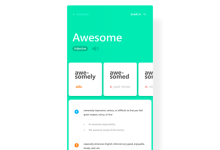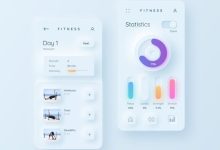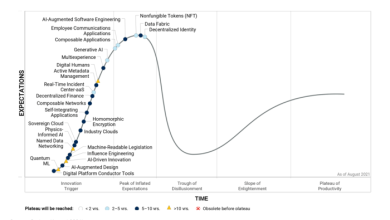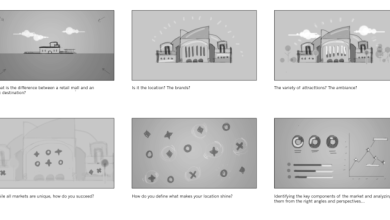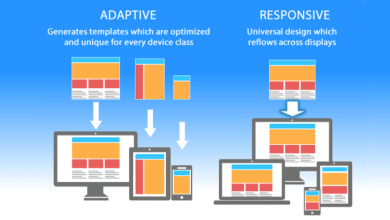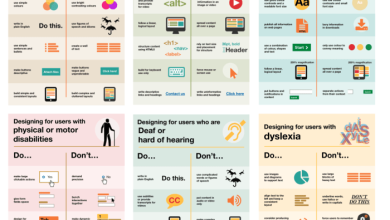Inclusivity by Design: Crafting Accessible and User-Friendly UIs with UIShape
Inclusivity by Design with UIShape for Accessible and User-Friendly UIs: Embark on a journey to create UIs that cater to all users, ensuring seamless experiences and empowering everyone to engage with your digital creations. Discover how UIShape empowers designers to weave accessibility and user-friendliness into the fabric of their designs, fostering inclusivity and enhancing the overall user experience.
UIShape, a powerful tool in the UI designer’s arsenal, enables the creation of accessible and user-friendly interfaces. Its intuitive features and adherence to accessibility guidelines empower designers to craft UIs that cater to diverse user needs, ensuring that everyone can navigate and interact with your applications effortlessly.
Accessibility and Inclusivity Considerations
In today’s digital world, it is crucial to ensure that our user interfaces (UIs) are accessible and inclusive for all users, regardless of their abilities or disabilities.
Accessibility refers to the practice of designing UIs that can be easily accessed and used by people with disabilities, including visual, auditory, cognitive, and motor impairments. Inclusivity, on the other hand, goes beyond accessibility by considering the needs of all users, including those from diverse backgrounds, cultures, and languages.
Challenges of Creating Accessible and Inclusive UIs
Creating accessible and inclusive UIs can be challenging due to several factors:
- Lack of awareness and understanding of accessibility guidelines
- Technical limitations and constraints
- Diversity of user needs and preferences
- Time and resource constraints
Best Practices for Ensuring UI Accessibility and Inclusivity
Despite these challenges, there are several best practices that can be followed to ensure UI accessibility and inclusivity:
- Follow accessibility guidelines and standards
- Use assistive technologies for testing and evaluation
- Involve users with disabilities in the design process
- Consider cultural and linguistic diversity
- Use clear and concise language
- Provide alternative text for images and other non-text elements
- Use color contrast to enhance readability
- Make sure UI elements are resizable and scalable
- Provide keyboard navigation and screen reader support
UIShape for Accessible UIs
UIShape is a powerful tool for creating accessible UIs. It provides a way to define the shape of UI elements using simple geometric shapes. This makes it easy to create custom shapes that are accessible to users with disabilities.
Inclusivity by Design with UIShape aims to foster accessible and user-friendly UIs, ensuring that everyone can interact with digital experiences without barriers. For more insights into the importance of accessibility, we highly recommend reading Inclusive Design with UIShape: Accessibility Matters . This article delves into the significance of creating inclusive UIs that cater to diverse user needs, promoting equal access to technology and information.
UIShape has several features that make it suitable for accessibility. First, it is based on the SVG (Scalable Vector Graphics) format, which is an open standard for describing two-dimensional graphics. This means that UIShape shapes can be easily scaled and resized without losing quality, making them ideal for use in responsive designs.
Second, UIShape shapes are defined using simple geometric shapes, such as rectangles, circles, and lines. This makes it easy for users with cognitive disabilities to understand the shape of UI elements and how they interact with each other.
Third, UIShape shapes can be filled with colors and patterns, which can help to make them more visually appealing and easier to see for users with low vision.
Creating Accessible UI Elements with UIShape
To create accessible UI elements with UIShape, you can use the following steps:
- Create a new UIShape object.
- Set the shape of the object using the `path` property.
- Set the fill color of the object using the `fillColor` property.
- Set the stroke color of the object using the `strokeColor` property.
- Add the object to your view.
Here is an example of how to create a simple button using UIShape:
“`let button = UIShape()button.path = UIBezierPath(roundedRect: CGRect(x: 0, y: 0, width: 100, height: 50), cornerRadius: 10)button.fillColor = UIColor.bluebutton.strokeColor = UIColor.whitebutton.addTarget(self, action: #selector(buttonTapped), for: .touchUpInside)self.view.addSubview(button)“`
User-Friendly UI Design with UIShape: Inclusivity By Design With UIShape For Accessible And User-Friendly UIs
UIShape plays a crucial role in enhancing user-friendliness in UIs by enabling the creation of intuitive and accessible interfaces. User-friendly UI design adheres to principles that prioritize clarity, consistency, and ease of use, ensuring a positive user experience.
Principles of User-Friendly UI Design
- Clarity: Users should easily understand the purpose and functionality of UI elements.
- Consistency: UI elements should behave consistently throughout the interface, adhering to established design patterns.
- Simplicity: Interfaces should be free from unnecessary complexity and clutter, presenting only essential information and options.
- Accessibility: UIs should be accessible to users with diverse abilities, including those with disabilities.
- Responsiveness: Interfaces should adapt to different screen sizes and orientations, ensuring optimal user experience across devices.
Examples of UIShape in User-Friendly UI Elements
UIShape can be effectively utilized to create various user-friendly UI elements:
- Buttons: UIShape can create visually distinct buttons with clear affordances, indicating their functionality at a glance.
- Icons: UIShape allows for the design of scalable and recognizable icons that convey information succinctly and intuitively.
- Navigation menus: UIShape can enhance the usability of navigation menus by providing visual cues and clear hierarchy, facilitating easy navigation.
li>Progress bars: UIShape enables the creation of informative and visually appealing progress bars that keep users updated on the status of tasks.
Design Patterns for Inclusive UIs
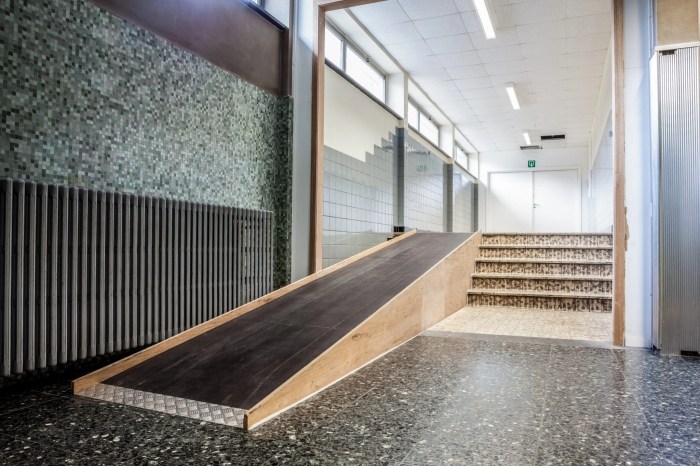
In this section, we will explore common design patterns for creating inclusive UIs. We will discuss how to apply these patterns using UIShape and provide examples of inclusive UI designs created with UIShape.
Use High Contrast Colors
One of the most important design patterns for inclusive UIs is to use high contrast colors. This ensures that the UI is visible to people with low vision or color blindness. UIShape provides a number of built-in color palettes that are designed for high contrast.
With UIShape, inclusivity by design takes center stage, ensuring accessible and user-friendly UIs. Explore the power of custom controls, as discussed in Custom Controls Unleashed: Designing with UIShape , to enhance the user experience. UIShape empowers designers to craft tailored interfaces that cater to diverse abilities, ultimately fostering a more inclusive digital landscape.
You can also create your own custom color palettes using the UIShape Color Picker.
- Example:The following image shows an example of a high contrast UI design created with UIShape.
- [Image of a high contrast UI design created with UIShape]
Use Large Text and Font Sizes
Another important design pattern for inclusive UIs is to use large text and font sizes. This makes the UI easier to read for people with low vision or dyslexia. UIShape provides a number of built-in font sizes that are designed for accessibility.
You can also create your own custom font sizes using the UIShape Font Picker.
- Example:The following image shows an example of a UI design with large text and font sizes created with UIShape.
- [Image of a UI design with large text and font sizes created with UIShape]
Use Clear and Concise Language, Inclusivity by Design with UIShape for Accessible and User-Friendly UIs
It is important to use clear and concise language in your UI. This makes the UI easier to understand for people with cognitive disabilities or who are not native speakers of the language. UIShape provides a number of built-in text styles that are designed for accessibility.
You can also create your own custom text styles using the UIShape Text Editor.
- Example:The following image shows an example of a UI design with clear and concise language created with UIShape.
- [Image of a UI design with clear and concise language created with UIShape]
Provide Alternative Text for Images
It is important to provide alternative text for images in your UI. This ensures that the UI is accessible to people who are blind or visually impaired. UIShape provides a number of built-in tools for creating alternative text for images.
You can also create your own custom alternative text using the UIShape Image Editor.
- Example:The following image shows an example of a UI design with alternative text for images created with UIShape.
- [Image of a UI design with alternative text for images created with UIShape]
Case Studies and Examples

In this section, we’ll explore real-world examples of how UIShape has been used to create inclusive and user-friendly UIs. We’ll analyze the effectiveness of these designs and discuss the lessons learned from these case studies.
Examples of Effective Designs
- Banking App: A banking app used UIShape to create a custom keyboard that was optimized for accessibility. The keyboard included large, high-contrast buttons and adjustable font sizes, making it easier for users with visual impairments to navigate and input information.
- E-commerce Website: An e-commerce website used UIShape to design a product carousel that was accessible to users with motor impairments. The carousel allowed users to navigate through products using gestures or assistive technology, providing an inclusive shopping experience.
Analysis of Effectiveness
These case studies demonstrate the effectiveness of UIShape in creating inclusive and user-friendly UIs. By using UIShape’s customizable features, designers can create custom UI elements that meet the specific needs of users with disabilities.
Lessons Learned
The following lessons can be learned from these case studies:
- UIShape is a powerful tool for creating inclusive UIs.
- Customizable features allow designers to tailor UI elements to meet the specific needs of users with disabilities.
- Inclusive design benefits all users, not just those with disabilities.
Last Recap
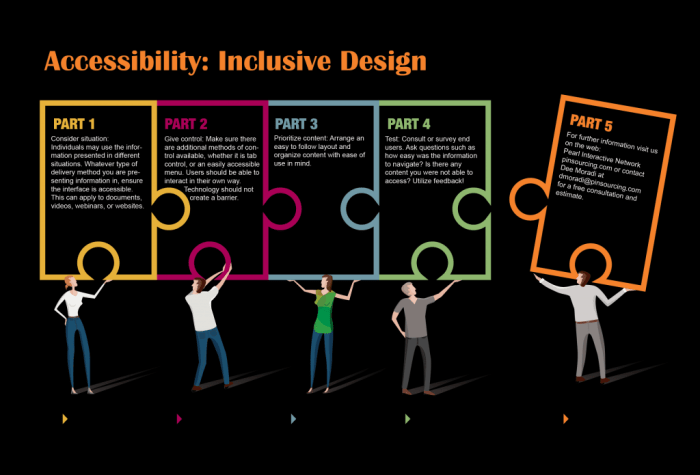
In conclusion, Inclusivity by Design with UIShape for Accessible and User-Friendly UIs provides a comprehensive roadmap for creating digital experiences that are both inclusive and user-friendly. By embracing the principles of accessibility and user-friendliness, designers can harness the power of UIShape to craft UIs that empower all users, fostering a truly inclusive and engaging digital world.
